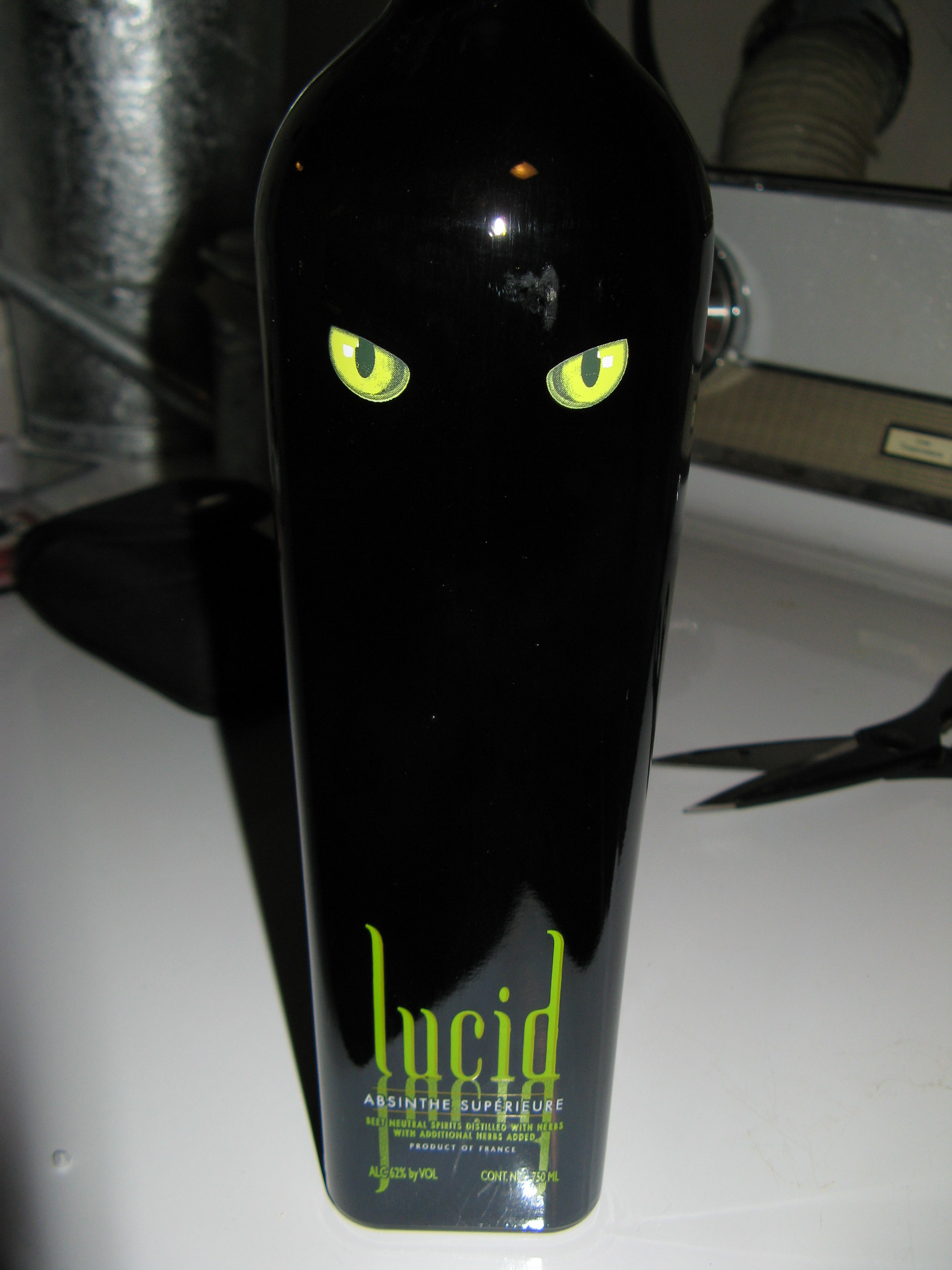
There’s so much bullshit, myth, and just plain wrong information surrounding Absinthe, that it is hard to know where to start.
If you’re interested in Absinthe at all, I first must recommend stopping by the Wormwood Society or La Fee Verte Absinthe House for much more information than I can possibly include here.
First off, Absinthe is part of a very old tradition of flavored, fermented beverages. Basically, we’re talking about things like beer and vermouth here. Both hops and wormwood help to preserve the fermented beverages they are added to, giving them a longer shelf life. But, after a while of drinking them, humankind started to have a taste for hops and other bitter flavors.
And by the way, by OLD, I mean, VERY OLD. Before the Roman Empire, very old.
After distillation was invented, originally for use in the perfume and cosmetic industry in ancient Egypt and Mesopotamia, folks discovered that they could use it to concentrate the essence of alcoholic beverages, giving them an even longer shelf life. Thus, things like Whisk(e)y (distilled beer) and Brandy (distilled wine) started to show up.
What is Absinthe?
Like Gin, Absinthe is a spirit that is distilled with additional flavorings.
For both, one takes some distilled high proof neutral spirits (basically unaged whisk(e)y or brandy), macerates some herbs and/or spices in them, and then re-distills.
In the case of Absinthe, the primary flavoring herbs are: Grand Wormwood (Artemesia absinthum), Florence Fennel (Foeniculum vulgare var. azoricum), and Green Anise (Pimpinella anisum).
If you were to go to your local natural food store, buy these herbs, infuse some high proof vodka with them, and then distill it again, you would have a very basic Absinthe.
Note the very important “distillation” step after infusion. You cannot make Absinthe simply by soaking herbs in Vodka or everclear. Many of the flavors of Grand Wormwood are very unpleasant. Distillation leaves most of these flavors behind, and captures the fragrance of the plant, instead of the taste.
For the same reason, you cannot make Absinthe by adding wormwood extract to Absente or other liquors and liqueurs that purport to taste like Absinthe. Wormwood extract is made by maceration of wormwood in high proof alcohol. Simply adding the extract to any drink will simply make it taste vile. And by vile, I mean vomitrociously vile.
So now that we have those few things cleared up, what is a citizen of the US to do, if they want to sample Absinthe?
Your first choice is purchasing one of any number of the Absinthe-a-likes on the market. Pernod, Herbsaint, Ricard, Absente, La Muse Verte Pastis, etc. The big problem with most of these liquors, is that, well, they are really liqueurs. To a greater or lesser extent almost all of them are sweetened. Also, compared to real Absinthe, most have a simplistic Anise heavy flavor profile. I’ve tried a bunch of them, and really the only one I can wholeheartedly recommend is Henri Bardouin Pastis.
Your second choice is to spring for having real Absinthe shipped from England or elsewhere in Europe. Unfortunately, this is a rather costly option. Decent Absinthes, like those made by T.A. Breaux for Jade in France, will run you well over $100 US a bottle plus shipping.
Fortunately, a new company called Viridian has decided to enter the US spirits market. They contracted Mr. Breaux and asked him to make an authentic Absinthe that they would be able sell in the US. Early reviews are quite positive, and if we’re lucky, we should see Lucid Absinthe on the shelves some time this year. It’s not going to be cheap; but, it will be much cheaper than buying Jade Absinthes from England.
OK, so you’ve got your Absinthe, or Absinthe-a-like. What should you do with it?
The most traditional way to serve Absinthe is as follows:
Absinthe Drip Cocktail
1 Liqueur Glass Absinthe
Dissolve 1 lump of sugar, (leave this out if you are using a sweetened Absinthe-a-like,) using the French drip spoon, and fill glass with cold water.
A couple questions come up right away. First off, how much is a liqueur glass?
Traditional Absinthe is bottled at around 140 Proof, (or 72 Percent Alcohol,) so you’re going to want to start with a little less than a shot. An ounce or an ounce and a quarter of Absinthe should be plenty. At least to start out with.
Second what is this “French drip spoon” they speak of? The French Drip spoon is a perforated spoon. I use a tea strainer, not having yet invested in the more advanced paraphernalia of Absinthe.
So what do you actually do?
Have some ice water ready in a pitcher which you can easily drip water slowly from. Some people use water bottles with those nipple things on them. Other just poke small holes in the bottoms of clean yoghurt containers.
Pour an ounce of Absinthe in a double old-fashioned glass or small water glass. Put your tea strainer or Absinthe spoon on top of your glass. Put a sugar cube in your tea strainer.
Slowly drip water onto your sugar cube, allowing the water to drip over, and down into the Absinthe.
At some time while you are dripping, you will start to see the Absinthe cloud. What is happening is, as the alcohol percentage of the solution drops, less oils are able to stay dissolved and they precipitate out forming what is called a “louche”.
When your Absinthe appears milky, give it a taste. Too strong? Add a few more drops of water.
The traditional dilution is 5 parts water to 1 part Absinthe. If you’re using an Absinthe-a-like, which are usually bottled at 80-90 proof instead of Absinthe’s 140, you may not want to use that much water.
This post is one in a series documenting my ongoing effort to make all of the cocktails in the Savoy Cocktail Book, starting at the first, Abbey, and ending at the last, Zed.